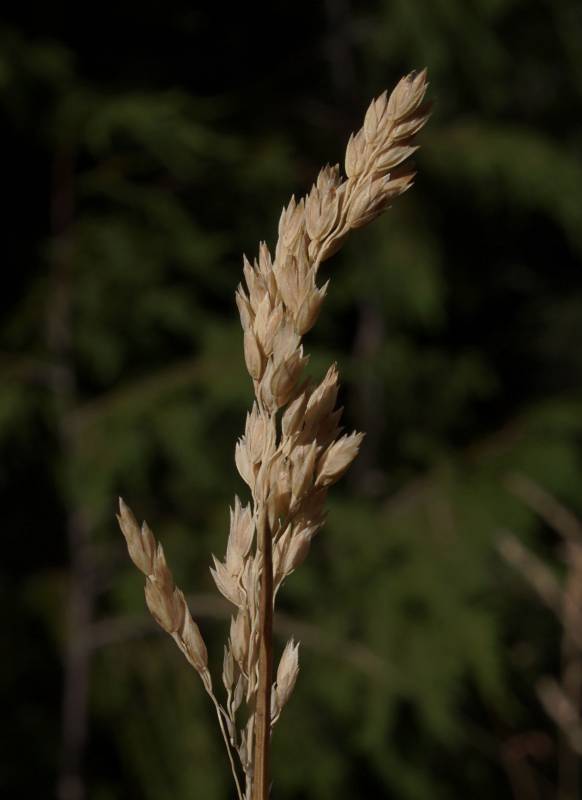Poa annua
Poa cusickii
annual blue grass
Cusick's bluegrass
Sheaths closed below, but open over half their length;
ligules about 1 mm. long, rounded to truncate;
blades 1-3.5 mm. broad, usually folded, the tip prow-like.
Sheaths closed about half their length;
ligules 1-3 mm. long, acute, jagged, glabrous;
blades of the fertile stems 1-3.5 mm. broad, flat;
blades of the sterile stems 0.5-1 mm. broad, involute, often 1-2 dm. long; all blades with prow-like tips.
Inflorescence a pyramidal panicle 3-8 cm. long, the branches spreading and somewhat rigid;
spikelets 3- to 6-flowered, 4-6 mm. long;
glumes unequal, the first 1-nerved, about 2 mm. long, the second 3-nerved, much the broader;
florets rather distant, the rachilla visible;
lemmas about 3.5 mm. long, 5-nerved, the margins purplish and papery, usually pubescent along the keel and marginal nerves;
paleas slightly shorter than the lemmas, 2-keeled.
Inflorescence a compact, ovoid panicle 2-6 cm. long, greenish or purplish;
spikelets 3- to 5-flowered, 5-8 mm. long;
flowers usually pistillate, the anthers vestigial or wanting, but occasionally the plants staminate- or perfect-flowered;
glumes subequal, 3-nerved, 3.5-5 mm. long, shorter than the first floret;
lemmas keeled, 5-nerved, 4.5-6 mm. long, pubescent;
paleas slightly shorter than the lemmas, 2-keeled.
Poa annua
Poa cusickii
- Local floras:
BC,
CA,
OR,
WA
- Local Web sites:
CalFlora,
CalPhotos,
Flora NW,
PNW Herbaria
WildflowerSearch
iNaturalist (observations)
USDA Plants Database
- LBJ Wildflower Center
- SEINet
- Plants of the World Online
- Encyclopedia of Life
- Wikipedia
- Google Image Search
- Local floras:
BC,
CA,
OR,
WA
- Local Web sites:
CalFlora,
CalPhotos,
Flora NW,
PNW Herbaria
WildflowerSearch
iNaturalist (observations)
USDA Plants Database
- LBJ Wildflower Center
- SEINet
- Plants of the World Online
- Encyclopedia of Life
- Wikipedia
- Google Image Search



